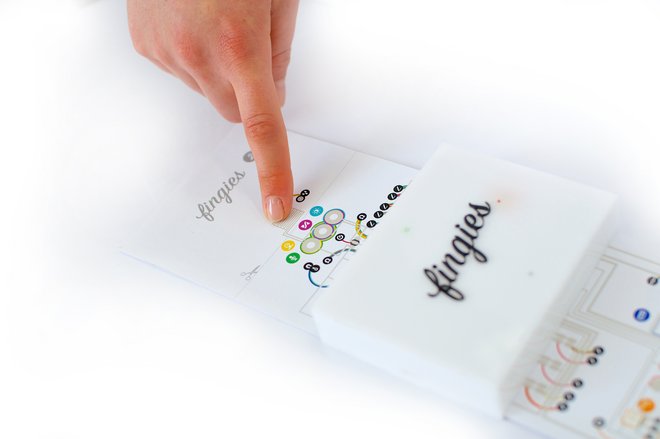Workshop

Printed electronics for unconventional Interfaces
The studio deals with the potential of printed electronics as a way to embed electronic and digital functionalities into everyday physical objects. Inspired by children educational toys we present a toolkit for experimenting with printed electronics and their tangible applications. It is an experimental prototyping platform for printed electronics that can be combined with different sensors and actuators from traditional and printed electronics.
In the studio we will build the toolbox from a pre-fabricated model set, that includes an Arduino Yún connected to 2 printed circuit cards (sensor and actor card). Different electronic components and sensors will be attached to the printed cards and will be used to record environmental parameters etc. The boxes communicate with each other or with your smartphone via a real-time Cloudserver.
Participants will then develop concepts for future Internet of Things applications based on their experience with the toolkit. In the final step we would like to discuss ideas for developing this platform further with the workshop participants.
PLEASE BRING YOUR LAPTOP AND IF POSSIBLE A SMARTPHONE OR TABLET.
(Don´t forget to bring your chargers. Our Smartphone Application can be used with any WebKit Browser.)
Schedule
| 9:00-9:15 | Introduction Internet Of Things & Printed Electronics Printed Functionalities |
| 9:15-9:45 | Fingies Toolbox System Demo Fingies Hardware Fingies Configuration |
| 10:00-12:30 | Fingies Hardware Assembly (Hands-on) Fingies Casing Configuration & First Test Download PDF |
| 12:30-13:30 | break / lunchtime |
| 13:30-15:00 | Exploring Fingies use cases Creative experiments in the Fingies Cloud with various sensors & actors |
| 15:00-16:30 | Review, discussion and ideas |
Download complete presentation
Featurelist
| Microcontroller board Arduino Yún (including Linux platform, Wifi, auto. battery charger) |
| Printed electronic sensors |
| Realtime socket server on node runtime |
Keywords
Printed Electronics, Embedded Function, Unconventional Interfaces, Prototyping Toolkit, Arduino.
ACM Classification Keywords
H.5.2 User Interfaces, Prototyping
Resources and Links
Workshop Staff
Prof. Dr. Jens Geelhaar
Johannes Deich
Jens Hammerschmidt
Michael Markert
Martin Schied
Gabriel Rausch

